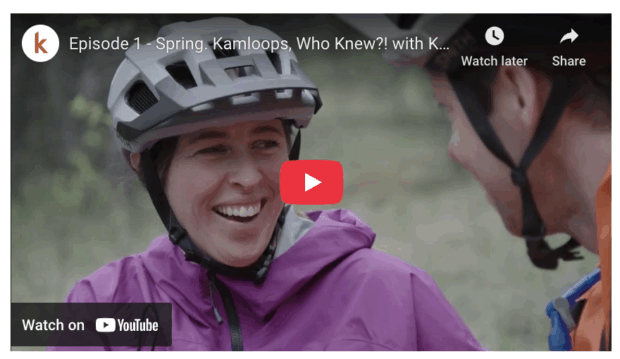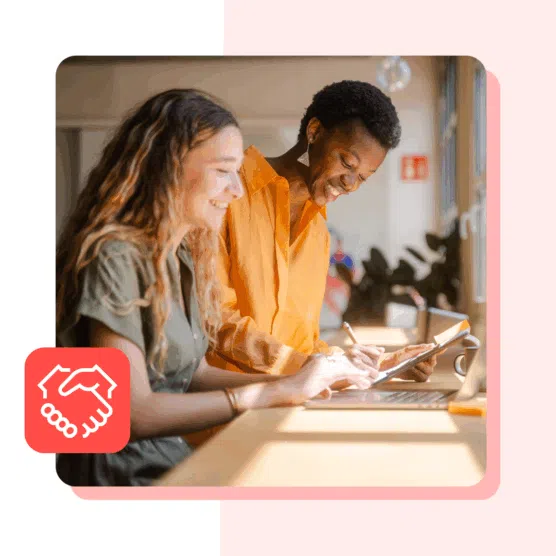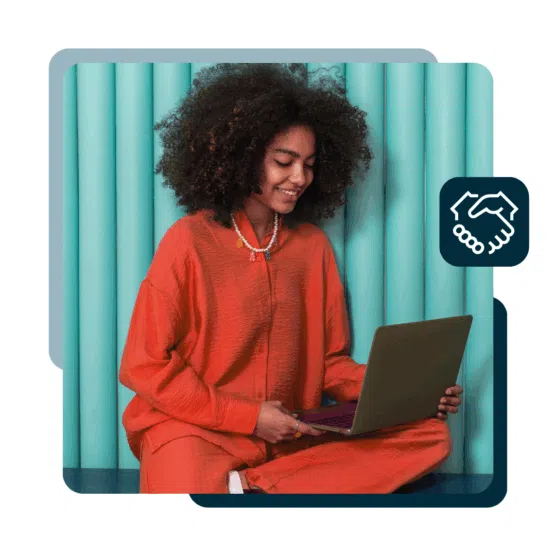Influencer marketing campaigns are a multi-billion-dollar business, and each year, more and more savvy brands partner with influential social creators to drive revenue, boost visibility, and connect with motivated audiences.
But not every collab delivers results. The most successful campaigns feel authentic, align with both the creator’s voice and the brand’s goals, and offer real value to the audience. From product demos to storytelling and interactive challenges, these partnerships go beyond #ads to build genuine engagement and trust.
So what does that look like in action? In this post, we’ll break down real-world examples of influencer marketing campaigns that don’t just look good on social — they drive serious results.
Key takeaways
- Influencer marketing campaigns that work are built on strategy, not just follower count. The best campaigns align creator authenticity with brand goals, clear KPIs, and audience targeting.
- There’s more than one way to partner with a creator. From sponsored posts to co-created products, affiliate marketing, and real-world activations, brands can choose from a range of campaign types based on goals and budget.
- Authenticity wins across all platforms. Today’s social media audiences—especially Gen Z—respond best to influencer content that feels personal, imperfect, and aligned with the creator’s usual voice.
- Successful influencer marketing is measurable. The most effective campaigns prioritize real-time optimization, audience resonance, and creative freedom—while tracking metrics that matter.
- You don’t need a massive budget to see big results. Whether you work with micro-influencers, tap into UGC, or use affiliate models, thoughtful partnerships can drive engagement, conversions, and brand loyalty.
What is an influencer marketing campaign?
Influencer marketing campaigns are strategic partnerships between brands and content creators designed to share authentic stories with targeted audiences.
Think of it as a trusted recommendation — only now, your friend has a ring light and a follower count in the thousands (or millions).
But it’s not just about sending free samples and hoping for the best. Great influencer marketing efforts in 2025 are built on alignment between brand goals and creator authenticity, whether you’re working with a micro-influencer or a macro-influencer with a massive follower count.
Influencer content has evolved. While some creators still post selfies with a brand’s products, campaigns today also include live shopping, AI influencers, virtual reality demos, and more.
One thing hasn’t changed: Audiences crave honest recommendations from people they trust. These days, we just expect those people to create high-quality content while they do it.
Why are influencer marketing campaigns so effective?
Influencer marketing campaigns work because they build trust, drive engagement, and deliver measurable results. Here’s why:
- The trust factor. 36% of millennial consumers trust recommendations from people they follow more than traditional ads. Influencers build trust with their audience, and smart brands know how to tap into that.
- Specific targeting. With advanced analytics, brands can find the right influencer—someone whose audience demographics align closely with their target market.
- Multi-platform reach. Effective influencer marketing isn’t tied to one social media channel. Today’s creators connect with their followers across Instagram, LinkedIn, Threads, and beyond.
- Real-time optimization. With instant access to campaign metrics, brands can adjust creative, messaging, or spend in real time for better optimization and performance.
And don’t forget the 3 R’s of effective influencer marketing:
- Relevance: Does their content naturally fit your brand?
- Reach: What’s their follower count, and how far can they spread your message?
- Resonance: Do their posts spark real engagement across your target social media platforms with the right audience?
When you get all three right, your campaign won’t just look good — it’ll perform.
Types of influencer campaigns
So what actually makes it a campaign, and not just a one-off social media post?
A true influencer marketing campaign is structured and strategic. It includes:
- Clear objectives and KPIs tied to real campaign goals
- A defined timeline, whether it’s a short-term new product launch or a long-term brand awareness push
- Strategic creator selection that matches your brand values and audience demographics
- Consistent messaging (without making it sound robotic)
- Data-driven performance tracking to prove ROI
But beyond the checklist, a successful influencer marketing campaign starts with clear communication.
“Every great campaign starts with an airtight brief,” says Eileen Kwok, social and influencer marketing strategist at Hootsuite. “That includes an overview, your campaign goals, how you’ll measure success, the creative ask (with an example), timelines, and expectations.”
Setting that foundation helps everyone win. The influencer knows what will resonate with their audience and your brand, and you know how to support them to deliver content that aligns with your vision.
Ready to explore the different campaign types? Let’s break down the most common (and most effective) types of influencer collaborations.
Sponsored posts
You’ve seen them: sponsored posts with #ad hashtags nestled between #blessed and #livingmybestlife. But when done right, a sponsored post can be far more than a product plug.
The best ones feel natural. Instead of shouting “Buy this!” your influencer partner smoothly integrates your product or service into their regular content, like a morning routine or a get-ready-with-me video.
In this example, @chloes.health shares a carousel of her morning habits, and one slide just happens to feature a sponsored app. Because it’s presented alongside her usual, trusted recommendations, it feels authentic, not forced.
That kind of smart integration doesn’t just sell: it earns a higher engagement rate by offering value and relevance to the audience.
Unboxing and reviews
There’s something undeniably satisfying about watching someone open a package. It’s like Christmas morning (minus the sibling drama).
@devanondeck #unboxing #colebudton #sweatpants ♬ original sound – DEVAN ANDERSON
When @devanondeck, the self-proclaimed “Sultan of Sweatpants,” talks loungewear, people listen. His unboxing of new Cole Buxton pieces gives followers a firsthand look at the products and lets them imagine the excitement of receiving that delivery themselves.
Challenges or hashtag campaigns
Challenges are a fun, fast-moving way to boost visibility and engagement. Just create a concept, pair it with a memorable hashtag, and let your community take it from there.
With the right influencer leading the charge, these campaigns can spark serious reach — and even better, real conversions.
One standout example? Crocs’ #thousanddollarcrocs campaign. Promoted by the right partners, it encouraged fans to show off their most personalized pairs, highlighting just how creative and customizable the product could be.
Behind-the-scenes content
Taking followers where they normally can’t go is a sure-fire way to juice that engagement rate. It’s like being backstage at a concert, except instead of hanging with the band, you’re watching how your favorite products get made.
Content creator @torriwebster offers an exclusive first look at this Toronto spa, giving followers an experience they can’t get anywhere else.
Educational content or tutorials
Learning is fun, ok? And sometimes we all need someone to explain things like we’re five.
Adobe does tutorials on Instagram with digital artists showing how to use its latest tools. @leobeckerdesign has more than 600,000 followers on Instagram, and now Adobe has gotten a chance to show all of them just what Leo can do with its program.
Live shopping events
Social shopping is available on select platforms in select countries (TikTok in the U.S. and the U.K., for instance). If it’s available to you, this feature allows you to team up with your favorite social media influencers to actually sell your products directly in the app.
A beauty brand might want to collab with a makeup artist, for instance, to demonstrate products for viewers to buy in real-time… and then watch those conversions fly.
If you’re eligible, learn more about setting up your TikTok Shop here.
Employee advocacy programs
Employee advocacy programs turn your own employees into influencers, because who knows your product better than the people who actually make it?
IBM’s employees are featured regularly on the @lifeatibm Instagram channel, helping humanize the corporation with personal posts about their lives and career journeys.
Long-term brand ambassadors
Unlike one-off posts, long-term partnerships are the influencer equivalent of making it official.
Gymnast @delaynee.rodriguez regularly features Accelerator energy drink in her content. Whether or not it actually boosts her athletic performance, her followers see it as part of her daily routine, which subtly reinforces the idea that it’s worth adding to theirs, too.
Cause marketing
Because sometimes social media marketing should be about more than just selling products.
The New Zealand SPCA partnered with lacrosse player Honor Carter to raise funds and awareness for animal welfare. The partnership worked because it felt genuine. Honor is a longtime dog lover and pet owner, making her a natural advocate for the cause.
The lesson? Choose influencers who have a real connection to your charity or cause. Authenticity makes the message land and helps the audience care.
Product launch campaigns
Want to build buzz fast? Give Instagram influencers or TikTok content creators early access and let them take it from there.
For a recent product launch, Lego teamed up with Pharrell and invited influencers to a VIP event in Tokyo. The result? A flood of content, complete with giant Lego sculptures, that helped generate serious hype before the product even hit the shelves.
Affiliate marketing
Don’t have the budget for a big social media influencer partnership? Affiliate marketing is a smart alternative for brands, especially in the ecommerce space, looking to drive results with low upfront cost.
This model rewards content creators with a commission for every sale they drive, making the partnership low-risk for brands and appealing for influencers. Indigo Luna’s collaboration with a confidence coach is a great example of how affiliate deals can benefit both sides.
If you’re a protein powder brand, for instance, you could team up with a Gymshark-style social media influencer and offer a cut of each sale they generate. Sweeten the deal with discount codes, limited-time giveaways, or other digital marketing incentives to boost conversions even more.
Here’s a quick recap of influencer campaign types to help you choose the right one for your brand:
|
Campaign Type |
Definition |
Example |
|---|---|---|
|
Sponsored posts |
Organic product integration in posts with #ad disclosure |
SocialLimits x @chloe.health |
|
Unboxing and reviews |
Influencers showcase product openings or reviews |
Cole Buxton x @devanondeck |
|
Challenges/hashtag |
Branded challenges with hashtags to spark virality |
Crocs’ #thousanddollarcrocs campaign |
|
Behind-the-scenes |
Exclusive looks at brand processes or events |
ETIKET Boutique x @torriwebster |
|
Educational content |
Tutorials or demos explaining products |
Adobe x @leobeckerdesign |
|
Live shopping |
Real-time product demos with in-app purchases |
TikTok Shop beauty collabs |
|
Employee advocacy | Employees as influencers sharing brand stories |
IBM’s @lifeatibm account |
|
Long-term ambassadors |
Ongoing partnerships for consistent brand presence |
Accelerator x @delaynee.rodriguez |
|
Cause marketing |
Partnerships for social good with aligned influencers |
SPCA x Honor Carter |
|
Product launch |
Early access for influencers to hype new products |
Lego x Pharrell event |
|
Affiliate marketing |
Commission-based partnerships with discount codes |
Indigo Luna x Melinde Huez |
8 successful influencer marketing campaign examples
Before we dive into some of the best influencer marketing campaigns, it’s worth noting: there’s no one-size-fits-all influencer marketing strategy.
That’s actually a good thing. As Eileen Kwok explains: “Whether it’s working with one creator to host an in-person event or collaborating with several for a big launch, the beauty of influencer marketing is that—no matter where your business is at—there are countless creators and tactics you can use to give your social media marketing an edge.”
So take these successful influencer marketing campaign examples as inspiration, not a template.
Synthia Kiss x Metro Vancouver
We’ve talked a lot about authenticity in social media, and this campaign proves that staying true to a creator’s voice matters, even when it means embracing a bit of absurdity.
Drag artist and social media influencer Synthia Kiss is known for her bold, theatrical style. Her audience expects over-the-top content, and Metro Vancouver delivered by partnering with her on a highly produced, delightfully silly news parody.
Sure, the brand’s message — a PSA about remembering reusable bags — isn’t exactly thrilling. But through Synthia’s lens, it became entertaining, memorable, and genuinely fun to watch.
The takeaway? Lean into your collaborator’s strengths. If they’re known for comedy, let them be funny. If they’re musical, let them sing. You’re not just hiring an audience: you’re hiring talent. Let them shine.
Josh and Matt x The Sims
Australian content creators Josh and Matt are known for their bold interior design style and love of ’90s and Y2K thrifted finds, making them a perfect match to help EA Games celebrate the 25th anniversary of The Sims.
To mark the occasion, EA invited the duo to design a Sims-inspired space that fans could visit in real life. The event also featured a free Q&A, where Josh and Matt shared personal stories about how the game shaped their youth, offering followers a more vulnerable, behind-the-scenes look.
The takeaway? Collaborations don’t need to stay online. Partnering with creators for live events or activations gives fans an in-person experience, and creates prime opportunities for user-generated content (UGC) as attendees share their own moments and memories with your brand.
The Dad Chats x Ninja Crispi
Dillon White, aka @TheDadChats, has built a loyal audience across Instagram and TikTok with his candid, often hilarious takes on family life, usually filmed from the front seat of his car with a rotation of coffee mugs.
For this campaign, kitchen brand Ninja leaned into that familiar setting by partnering with Dillon to showcase their compact air fryer. He baked a cake right there in his car. It was messy, chaotic, and totally unpolished, but it worked. Viewers got an honest look at the product in action, proving its effectiveness in tight spaces.
The takeaway? Don’t be afraid to let your influencer partner get real. While traditional ads favor polish, social media rewards realness. Authentic, unfiltered moments often resonate more, and that’s what builds trust.
Louis Bekk x Tinder
UK-based DJ Louis Bekk partnered with Tinder for a one-night-only pop-up set at a London bagel shop—and the place was packed. The crowd wasn’t just there for the music; it was full of creators eagerly filming and sharing the moment on social media.
It was a smart move. While Louis was the featured talent and core collaborator, he also served as a magnet for other influencers. By offering exclusive access, Tinder sparked a wave of organic content from attendees, including micro-influencers, amplifying the campaign far beyond a single post.
The takeaway? Use one influencer to get other creators talking. A well-planned moment gives social media creators something to talk about, generating authentic, high-volume exposure without extra ad spend.
The August Diaries x Droplet
What’s better than having an influencer promote your product? Having them co-create it.
Homewares brand Droplet Home Goods partnered with lifestyle creator the August Diaries to design a pattern for a limited-edition blanket. The result? The Happy Blanket sold out within hours.
Beyond quick sales, the collab delivered ongoing brand awareness. With each new release, Droplet earns another spot on the August Diaries’ feed, keeping the brand in front of her loyal audience.
The takeaway? Co-create products with your influencer partners. Whether they help design something new or customize an existing item, fans love the chance to buy something tied to their favorite creator. It’s a simple way to boost both sales and visibility.
Katie Burrell x Tourism Kamloops
Tourism Kamloops teamed up with content creator Katie Burrell on a series of comedic ads that likely didn’t come cheap. The production value was high, with writers, actors, professional cameras, and polished editing.

But the investment paid off. The videos were repurposed across platforms — YouTube, Instagram, blog posts, and more — maximizing reach and bringing the cost per post down significantly, without sacrificing quality or blowing out their pricing strategy.
Working with a smaller budget? Collaborate with local micro-influencers or lean on user-generated content to create authentic clips — no big production budget required..
The takeaway? Turn one collab into dozens of omnichannel content opportunities. Long-form campaigns offer serious mileage when repackaged across your social media channels: a comedy skit becomes teaser clips, Instagram Reels, behind-the-scenes posts, and even a podcast segment. Think big, but plan to slice it up.
Refy’s Biggest Fans x Refy
Instead of sourcing new social media influencers for a recent digital marketing campaign, beauty brand Refy turned to its existing community—its biggest fans.
Using its Instagram Broadcast channel, Refy invited followers to apply for a hosted trip to Mallorca. The resulting “Community Trip” filled attendees’ feeds with authentic content and helped the brand reach new audiences in a way that felt natural and earned.
By curating a visually stunning experience aligned with its brand values, Refy gave fans every reason to post—and boosted credibility and loyalty in the process. It also sent a clear message to potential customers: love the product, and you could be rewarded for it.
The takeaway? Work with your most authentic fans. You can’t buy a genuine endorsement, but you can give people already supporting you a louder platform. When real people do cool things with your brand, others take notice.
LinkedIn social media influencers x Hootsuite
To promote our Social Media Career Report, Hootsuite partnered with LinkedIn social media influencers — a mix of professionals and executives — for a sponsored post campaign led by our own influencer strategist, Eileen Kwok.
The concept was simple but powerful: each influencer shared an authentic career story paired with a custom Hootsuite-branded whiteboard, inspired by the viral @dudewithsign format. The mix of personal storytelling and a strong visual hook made the content stand out in busy LinkedIn feeds.
Instead of scripting every line, Kwok encouraged the influencers to speak from experience, which helped the campaign resonate with both social media pros and business decision-makers.
The results? 1.2 million impressions, 20,000 engagements, 8,000 clicks, and 1,200 leads, showing what’s possible when the right message meets the right platform.
The takeaway? Let influencers tell their own stories, but give them a memorable visual to amplify impact. A visually memorable, platform-specific idea can elevate a sponsored post into something truly impactful.
What makes an influencer campaign work?
What do all these successful campaigns have in common? They’re not just throwing money at influencers and hoping for the best. They focus on authentic connections, trust creators with content creation, play the long game, and measure what matters.
The next time you’re planning an influencer campaign, remember: the best results don’t come from micromanaging every hashtag or caption. They come from finding the right partners, empowering them to create in their own voice, and giving the campaign space to resonate.
Make influencer marketing easier with Hootsuite. Schedule posts, research and engage with influencers in your industry, and measure the success of your campaigns. Try it free today.






